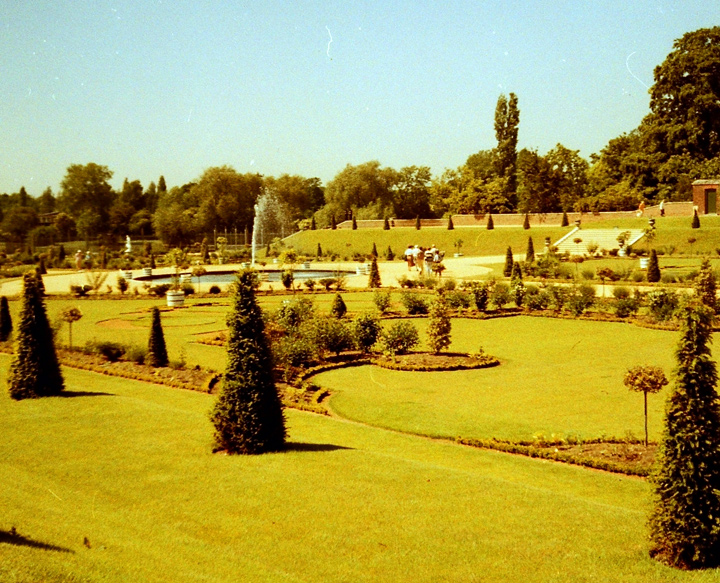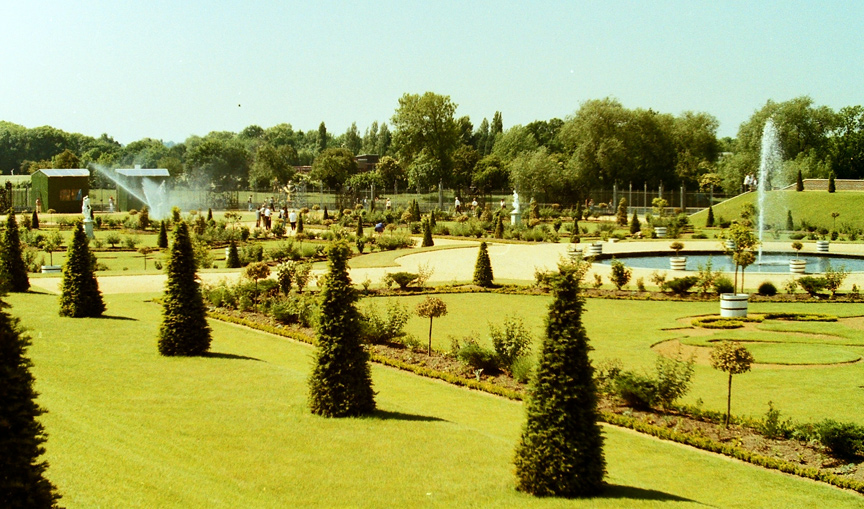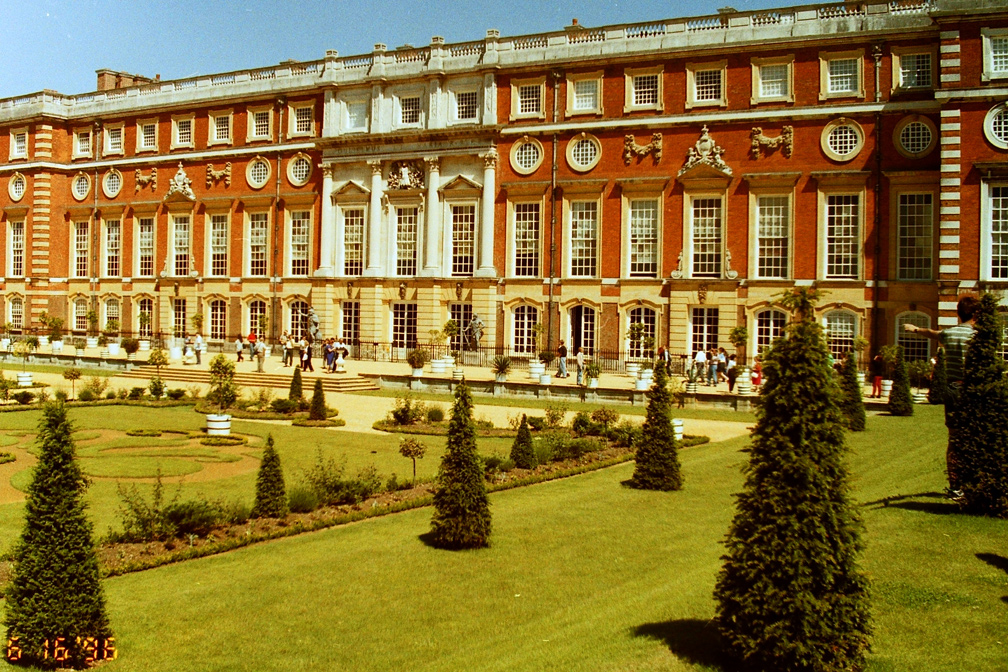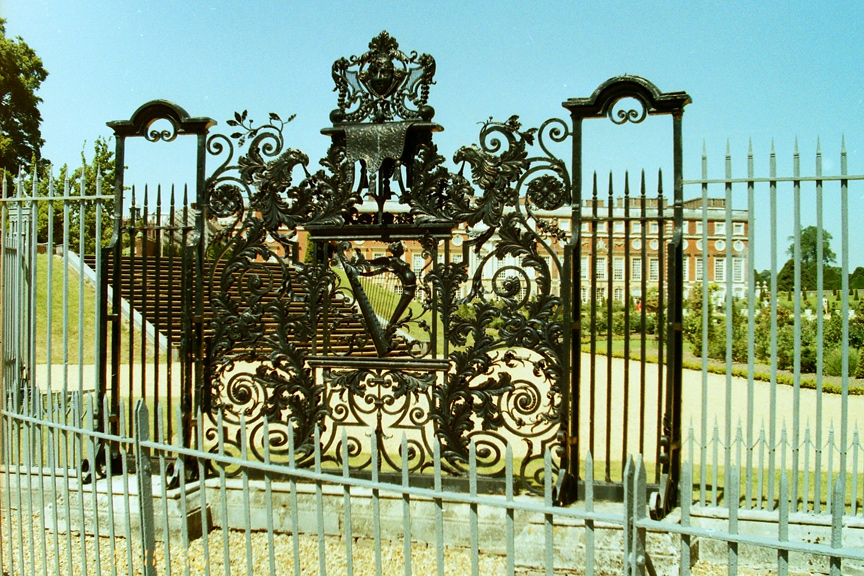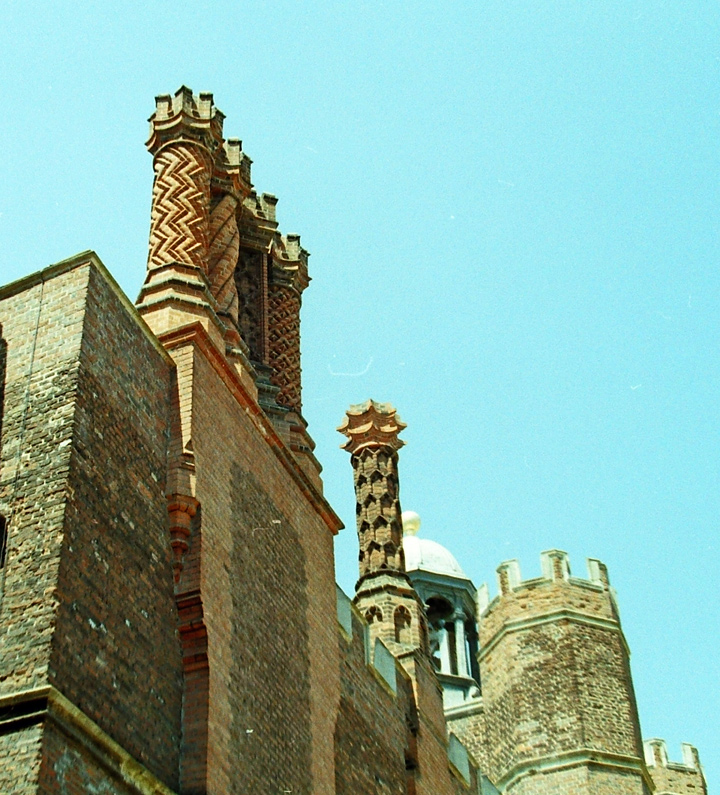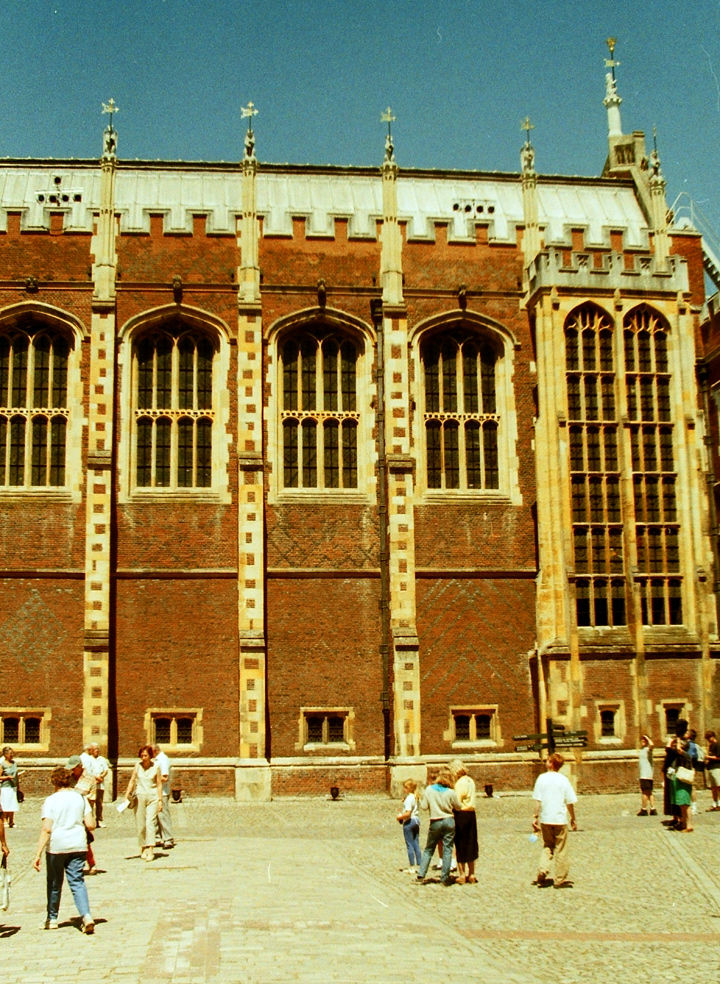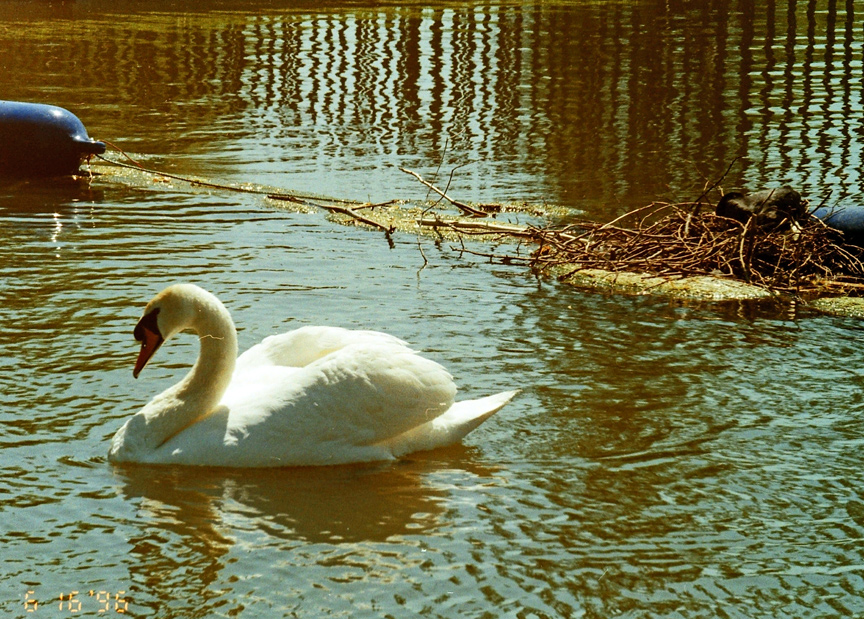

Hampton Court Gardens
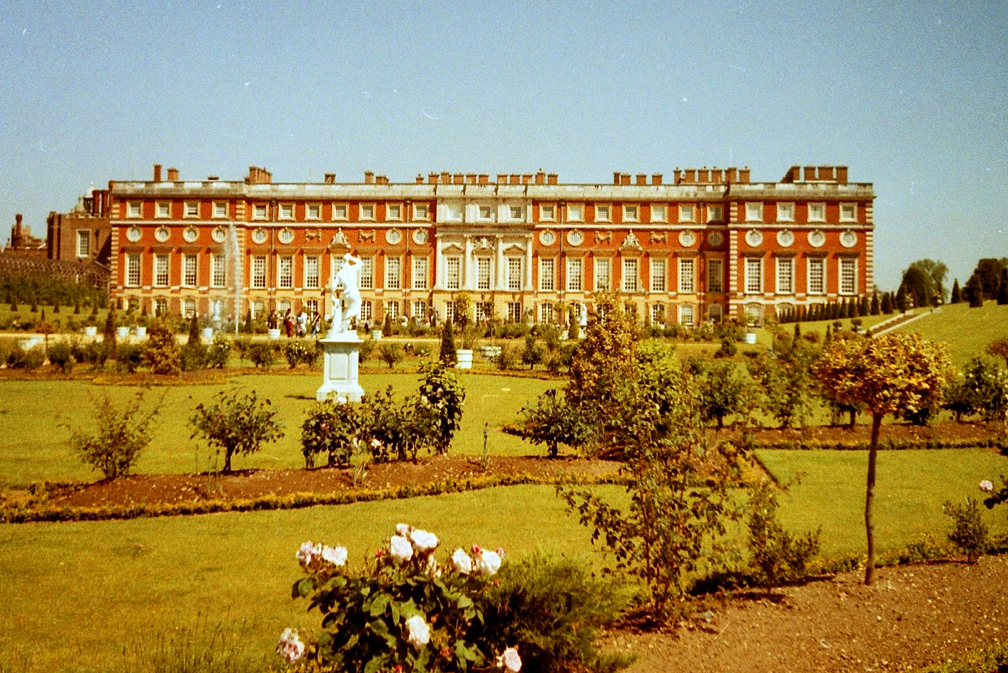
A well-known curiosity of the palace's grounds is Hampton Court Maze; planted in the 1690s by George London and Henry Wise for William III of Orange. It was originally planted with hornbeam; it has been repaired latterly using many different types of hedge. there is a 3D online browser simulation of the Hampton Court Maze--see the external links section
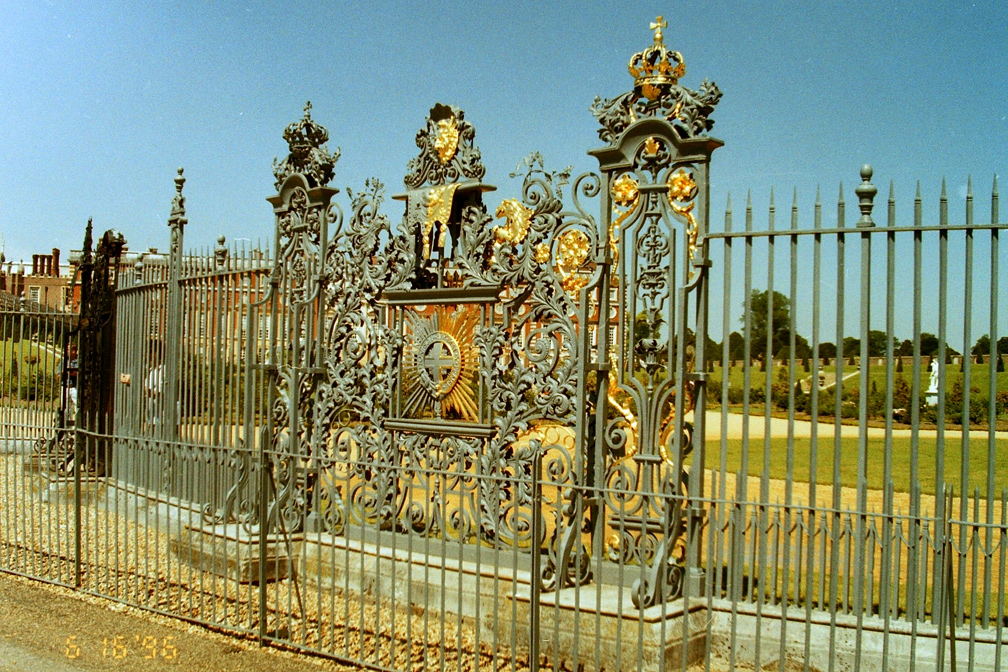
Hampton Court Maze is a hedge maze planted some time between 1689 and 1695 by George London and Henry Wise for William III of Orange at Hampton Court Palace. The maze covers a third of an acre and contains half a mile of paths. It is possible that the current design replaced an earlier maze planted for Cardinal Thomas Wolsey. It was originally planted with hornbeam, although it has been repaired using many different types of hedge.
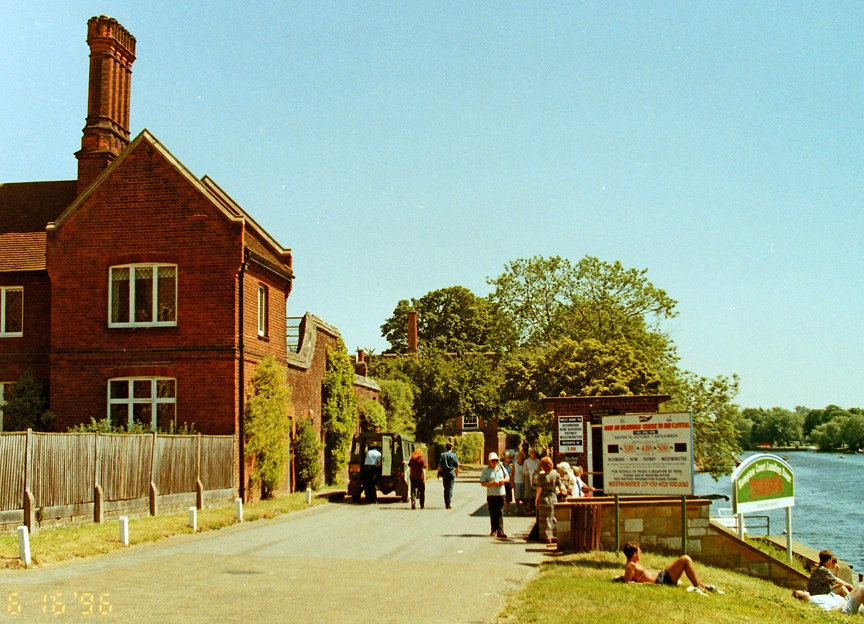
Thames landing
The maze is in 60 acres (0.2 km2) of riverside gardens. It has been described by many authors, including Defoe, and the humorist Jerome K. Jerome, who wrote in Three Men in a Boat:
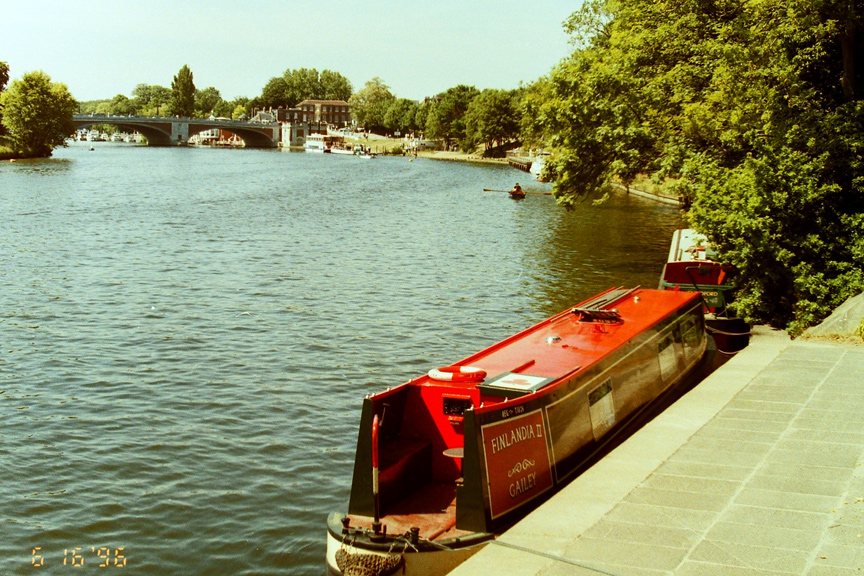
The Thames
"We'll just go in here, so that you can say you've been, but it's
very simple. It's absurd to call it a maze. You keep on taking the first turning
to the right. We'll just walk round for ten minutes, and then go and get some
lunch."
...Harris kept on turning to the right, but it seemed a long way, and his cousin
said he supposed it was a very big maze.
"Oh, one of the largest in Europe", said Harris.
"Yes, it must be", replied the cousin, "because we've walked a good two miles
already!"
Harris began to think it rather strange himself, but he held on until, at last,
they passed the half of a penny bun on the ground that Harris's cousin swore he
had noticed there seven minutes ago.
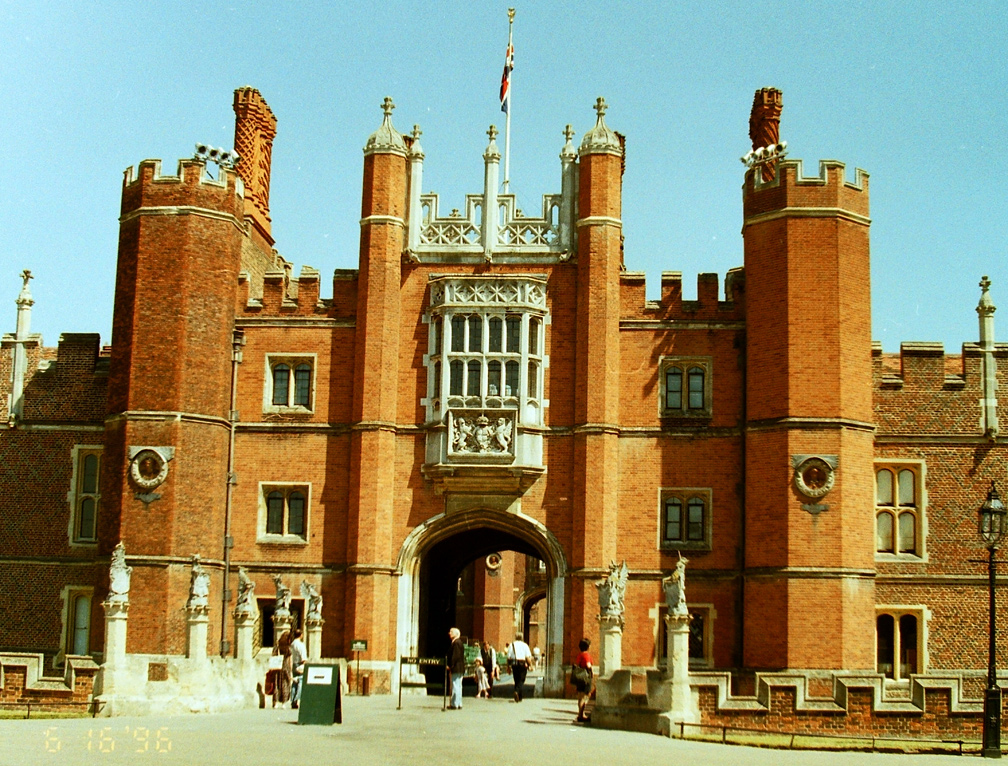
Jerome exaggerates the hazards of the maze. The maze has relatively few places
at which the path forks and at all but one fork (in Jerome's time) the wrong
choice led to a dead end at the end of a short corridor. There are many larger
and more elaborate mazes nowadays. Recently, three new forking places (not shown
on the plan displayed just outside the entrance) have introduced more
possibilities of walking closed loops within the maze. The maze can still, as
Harris stated, be threaded from entrance to centre and back by the method of
always remaining in contact with the wall on one's right. This method guides the
traveller into (and then out of) some dead ends and is thus not the shortest
path. Topologically, this is a depth first search algorithm.

Hampton Court kitchen
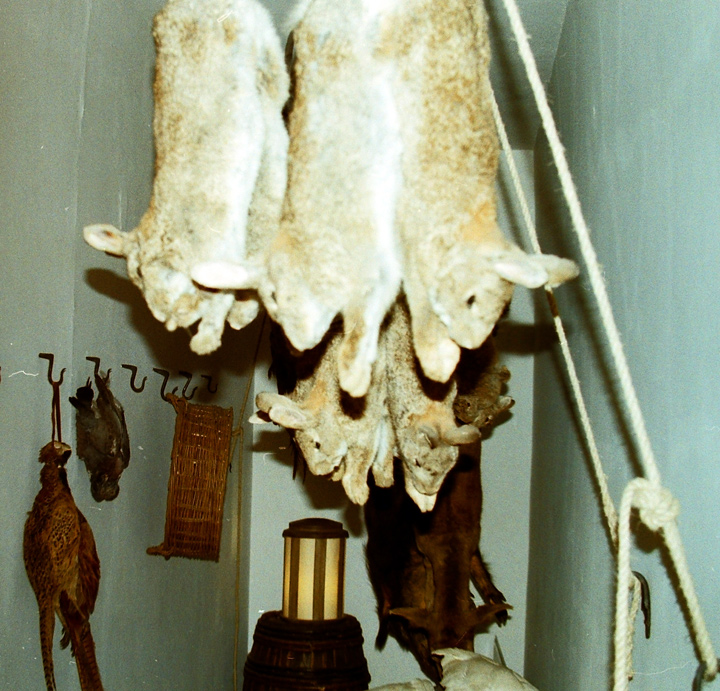
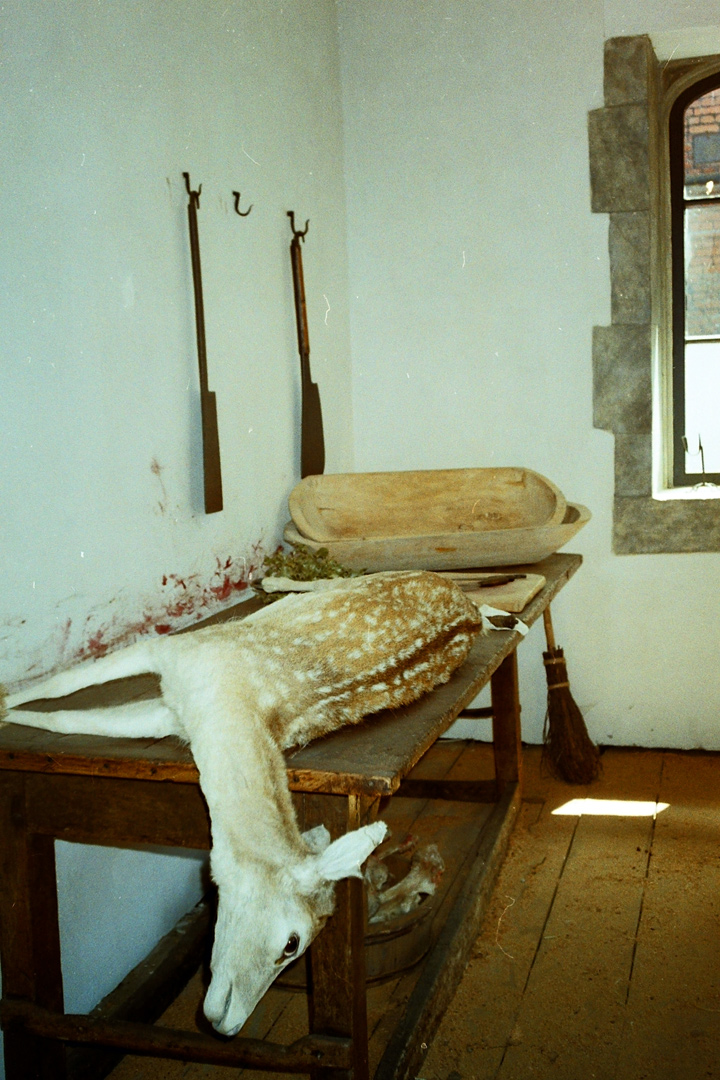
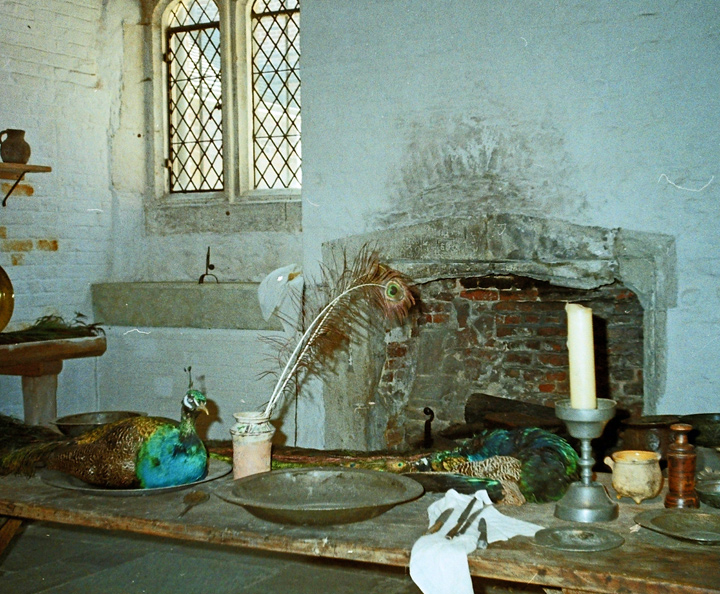
In 2006, arts group Greyworld were commissioned to create a permanent artwork
for the maze. Their installation, a sound work triggered by hidden sensors
embedded in the maze walls, is titled Trace. The maze has also been mentioned in
Carol Shields' 'Larry's Party'.
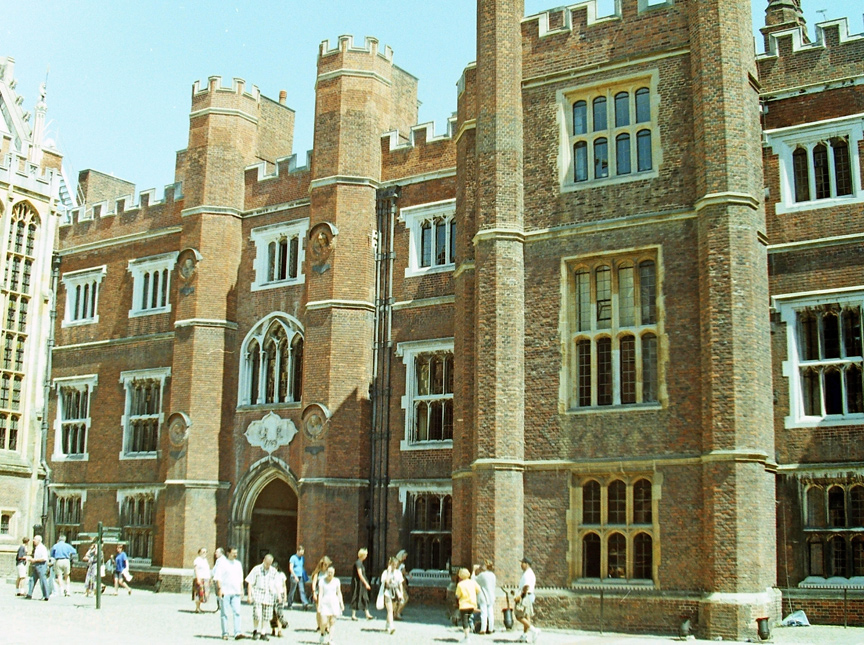
Hampton Court Park – sometimes called the Home Park – is adjacent to Hampton Court Palace and Gardens in South London, United Kingdom, mostly lying within East Molesey, with a smaller area in Kingston upon Thames. Hampton Court Park is a royal park, but not one of the eight Royal Parks of London because it is the site of a Palace. It is managed by the Historic Royal Palaces. In September 2014 part of it was designated a biological Site of Special Scientific Interest together with Bushy Park and Hampton Court Golf Course as Bushy Park and Home Park.
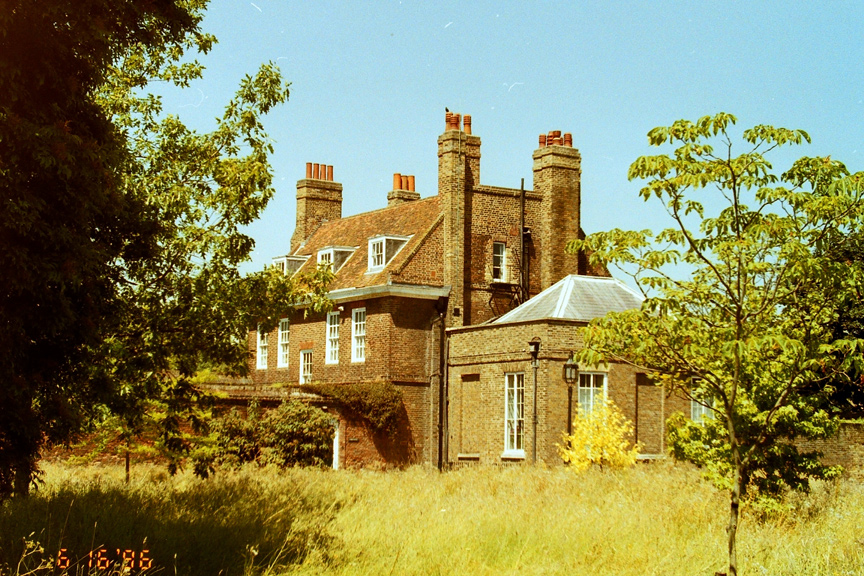
It is a walled deer park of around 700 acres (280 ha) in area and has been open
to the public since 1894. The A308 road and the River Thames form its
boundaries. North of the A308 is the better-known Bushy Park. The Royal Mews
still graze some of their horses on the park during the summer months.
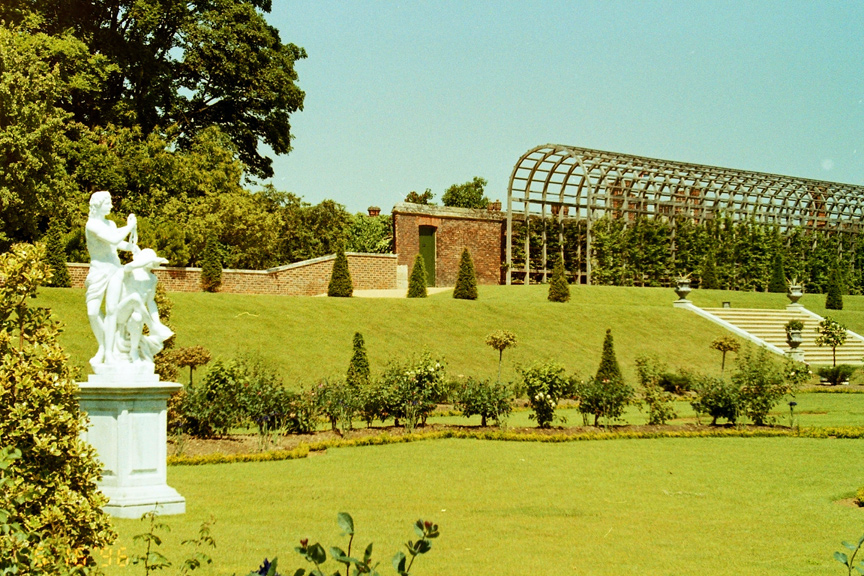
One of the main features of the park is the Long Water which runs roughly
eastward from the back of Hampton Court Palace. At the eastern end is the Golden
Jubilee Fountain.
Text from Wikipedia
